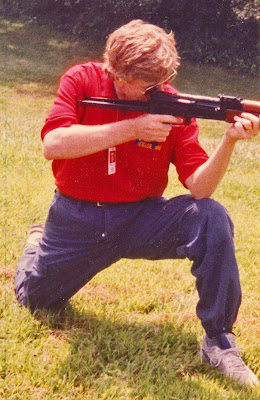Tebow point to God
Home school advocates are suffering buyer’s remorse
and lately demand the right by legislation to select ala carte services from the public schools that they, by
homeschooling, have pronounced unworthy to educate them.
Home school parents want the right by law for their
home school students to play on the athletic teams of the schools that they
have chosen to avoid.
Republican Delegate Rob Bell, from the 56th
District, Albemarle County, authored what he called the “Tebow bill” to force
every public school in the Commonwealth to allow homeschoolers to compete on
public school teams even though they don’t attend the school.
The first fair concern is that Bell has widely
characterized his proposal as the “Tebow bill” after the home-schooled Denver
Bronco’s quarterback, Tim Tebow, who struck kneeling, fisted praying poses on
the playing field when he scored.
Bell plays to that large fraction of the home
schooling movement therefore that schools at home to avoid being taught, among
other things, modern science that contradicts their fundamentalist beliefs that
the Bible is to be understood literally and not as metaphor or allegory. Bell says he is a “committed supporter of
home schooling.”
How ironic that we have the Delegate from Albemarle
advocating homeschooling. No doubt he’d
tell us he’s an “originalist,” and would have us all follow the founding
fathers “original” intentions.
Bell’s historic neighbor, Thomas Jefferson, as a
member of the Virginia House of Delegates headed a committee in 1776 to revise
the laws of Virginia.
After the Declaration of Independence, Jefferson is
known for his “bill for establishing religious freedom,” advocating a
separation of church and state. Bell
disregards that stance.
Another initiative Jefferson cared deeply about was
his “bill for the more general diffusion of knowledge.” Jefferson was celebrated for his “Notes on
the State of Virginia,” circulated in 1781.
Among his “Notes,” Jefferson proposed to divide every county into small
districts “and in each of them to establish a school for teaching reading,
writing and arithmetic.” Some students
supported by public expense would afterward either teach or receive
scholarships to study at the College of William and Mary. In 1796, Virginia passed a bill supporting
public education. Jefferson wanted more
and wrote John Adams in 1813 that he hoped public schools would become “the
keystone in the arch of our government.”
Jefferson is oft-quoted for his sentiment that "a nation that expects to
be ignorant and free expects what never was and never will be.”
Bell who would be our Attorney General thinks he
knows better than Jefferson what the Commonwealth needs. Bell disregards Jefferson’s stance on public
education as well.
In the House of Delegates, Bell’s wrong-headed bill,
in contravention of principles espoused lifelong by Jefferson, passed with the
support of our local Delegates, Randy Minchew and Joe May.
We can rightly score them critically for supporting
a religiously inspired initiative that is antagonistic to our public school
system.
This bill also ignores the reality of what it means
to play on or support a school team.
You have either played on school teams yourself in
High School, or had a sibling who did, or a child or spouse who did, or you’ve
coached a team in some sport or other.
So you know how it really works.
Let us consider Loudoun Valley, a public high school
in Purcellville. We could consider other
Schools of course. This school’s mascot is a Viking. Book covers, jackets, t-shirts, sweatshirts,
team uniforms are emblazoned with this symbol.
Nor is it easy to criticize the school for academic performance. Valley satisfies the standards of learning
and has quite respectable SAT scores and terrific placement for its
graduates. The students attend class
together and a fair number participate in softball, lacrosse, golf, volleyball,
track, girls’ cross country and gymnastics teams that have all performed well
in competition. They have a well-regarded
marching band, the Marching Vikes, comprised of music students. One of the inspiring messages for competition
at this school, as at any other, is their “school spirit” born of invocations
by parents, teachers and students about how they all belong to this community
of Viking students, how they know each other, care for each other, are friends,
who study together, date, dance, share lunch, and attend extracurricular
activities all together. Yet, some
representative group from this community participates on the Viking teams, and
they are supported by their friends on the team, cheer leaders who know them,
student reporters who write about them, year book editors who memorialize their
wins and losses, and their Viking fans.
Who wants to play on a team for a school that your
parents or you believe is antithetical to your beliefs and unworthy of your
attendance? But isn’t that what Bell and
his cronies would foist on our public schools here in Loudoun and across the
Commonwealth? I believe so.
Fortunate for us, what the House of Delegates passed
was then killed in the Senate Committee on Education and Health on Valentine’s
Day.
It should come as no surprise that State Senator
Dick Black, a member of that Senate Committee, fought to pass Bell’s bad
idea. So, the ill-considered pass by the
House was intercepted at the line of scrimmage in the Senate. Before the next play, let your elected
representatives know they are not representing you or our children when they
introduce and fight for laws that Jefferson spent his life opposing.




